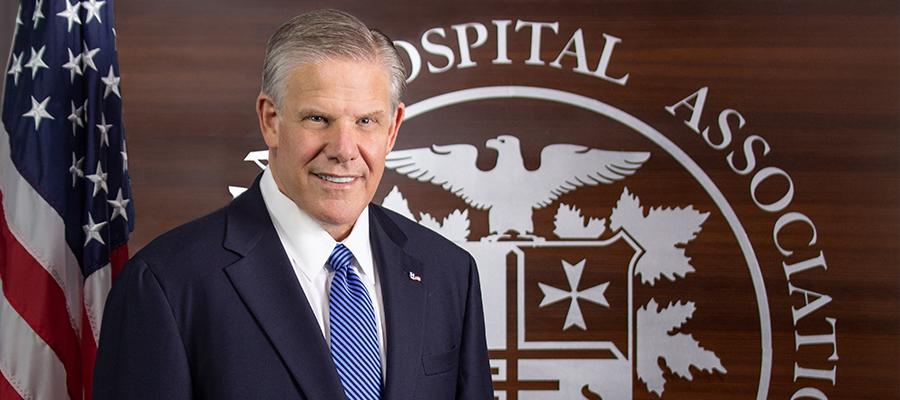AHA Responds to 60 Minutes Story on Hospital Prices

Sunday night’s 60 Minutes story was not a balanced view of the current health care landscape as it relates to hospital prices and provider and insurer consolidation.
America’s hospitals and health systems are the only place in the health care system where the doors are always open, and where care is available for everyone who walks through the doors. Maintaining that level of patient access requires significant resources to ensure a care infrastructure is there for any traumatic event, in any community, at any time.
This became more apparent this year as hospitals and health systems — and their brave front-line caregivers — continue to fight a relentless pandemic. No other part of the health care system has stepped up – and been at the forefront– to meet these growing demands. The benefits of systems of care were demonstrated as many systems were able to move staff and equipment to hospitals to meet the patient demands during COVID.
Moreover, studies on hospital systems created through mergers by Charles River, a leading global consulting firm, have found statistically significant improvements in quality, specifically in the reduced rates of readmissions and mortality associated with mergers. The facts are that in addition to improving quality, mergers produce important cost savings and do not increase revenues. And, importantly, mergers can keep hospitals open to serve patients.
Mergers also are responsible for expanding the capacity of smaller and rural hospitals in particular to prepare for and provide care in these unprecedented circumstances by creating more robust systems of care. Without the lifeline of financial, technical, material and professional support provided by these systems of care, the situation would be even more dire for many Americans during a pandemic.
And we must also acknowledge how much has changed because of the COVID-19 pandemic. Many hospitals and health systems are now struggling financially as they continue to care for patients in their community day in and day out. Even before the current COVID-19 crisis, the financial health of many hospitals and health systems was challenged, with a third operating in the red and increasing numbers of uninsured patients. More than half of all hospital care is paid by Medicare and Medicaid, which set rates administratively that don’t cover the full cost of care. Despite these challenges, hospitals, unlike commercial insurers, continue to provide financial assistance to those in need to assure that payment is not a barrier to getting the care they need.
Amid the global pandemic, hospitals are working hard to manage increasing costs while providing life-saving care for COVID patients and others. The cost of providing care continues to increase for hospitals and health systems. Prescription drug spending per hospital admissions increased 18.5% between fiscal years 2015 and 2017, per AHA’s 2019 study. Further, staffing – including salaries and bonuses paid to our health care heroes – makes up the single largest driver of hospital expenses.
An analysis released earlier this year showed that non-profit hospitals provided $100 billion in community benefits in 2017. This is the most recent year for which comprehensive data is available and represents 13.8% of their total expenses that year. Tax-exempt hospitals report publicly on community benefit activities, which include financial assistance for those in need, as well as a wide range of programs and services to meet the current and future health needs of all they serve. Sutter Health, for example, provided $830 million in 2019, far more than their fair share in community benefit in return for their tax-exempt status.
In addition, hospitals have cared for patients and met the needs of their communities while keeping hospital price growth at historic lows. According to the Centers for Medicare & Medicaid Services, price growth for hospital care services was just 2.4% in 2018, and non-price factors such as intensity of services and inpatient bed days grew slowly as well. These factors combined for historic low growth in hospital spending. More recent data from the U.S. Bureau of Labor Statistics shows hospital prices have consistently grown less than 3% per year over the last decade and have frequently grown by less than the average rate of inflation. In fact, even when excluding the artificially low rates paid to hospitals by Medicare and Medicaid, annual price growth has still been at or below 3% in recent years.
Lastly, we cannot have a serious discussion about health care affordability without highlighting the lack of competition in U.S. health care markets. Recently, the American Medical Association’s annual review of U.S. health insurance markets indicated an erosion of competition and choice for many patients, particularly in markets where it is most scarce. And, it’s only getting worse. According to the AMA study, more than half (52%) of the markets that were highly concentrated in 2014 became even more concentrated by 2019.
Many dominant commercial health insurance companies would benefit from terms that allow those insurers to cherry-pick the hospitals with which they contract, leaving consumers in areas the companies deem less desirable at a disadvantage. The last thing we should be doing is give these companies even more opportunities to force narrow and inadequate networks that effectively deny patient access to care.
###

